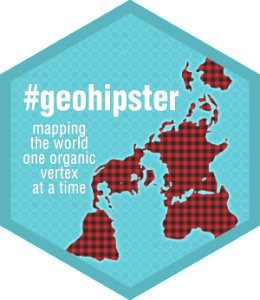Tag: Gretchen Peterson
-
Maps and mappers of the 2016 calendar: Gretchen Peterson
In our series “Maps and mappers of the 2016 calendar” we will present throughout 2016 the mapmakers who submitted their creations for inclusion in the 2016 GeoHipster calendar. *** Gretchen Peterson Gretchen Peterson’s most recent books are City Maps: A Coloring Book for Adults and QGIS Map Design. Peterson resides in Colorado and actively tweets…
-
13 maps in 13 days: Gretchen Peterson
Sending off the year 2015, we present to our readers the mapmakers who contributed their work to the 2015 GeoHipster calendar. *** Gretchen Peterson Q: Tell us about yourself. A: I am the author of the cartography books Cartographer’s Toolkit: Colors, Typography, Patterns and GIS Cartography: A Guide to Effective Map Design. I am also…
-
2016 GeoHipster calendar showcases technological and cartographic artistry
Last month GeoHipster put out a call for maps for the 2016 GeoHipster calendar. The response was overwhelming, with nearly two dozen maps being submitted. The submissions represented a cross-section of the cartographic talent and imagination of the geospatial industry. The GeoHipster advisory board certainly had its work cut out for it. We would have…
-
Gretchen Peterson: “Cartography is fundamentally about where things are, not about the technology that displays them”
Gretchen Peterson is a cartography explorer who is constantly on the lookout for new techniques, tricks, and solutions that collectively elevate the status of maps. Peterson shares these adventures in her cartography books, blog, and twitter stream, and also, sometimes, cracks extremely funny nerd jokes. As a Data Scientist at Boundless, Peterson designs basemaps with…
-
The 2015 GeoHipster Calendar is available for purchase
We are excited to announce that the first-ever GeoHipster wall calendar is ready for production. We thank all who submitted maps for the calendar, Christina Boggs and Carol Kraemer for co-originating the calendar idea, and Christina again for her ongoing assistance with logistics and curation. The 2015 GeoHipster Wall Calendar makes a great holiday gift…
-
Andrew Turner: “Share, experiment, fail, try again, share — ride that geofixie like a boss”
Andrew Turner (blog, Twitter) is the CTO of the Esri R&D Center in Washington, DC. Andrew was interviewed for Geohipster by Atanas Entchev. Q: You became an Esri employee when GeoIQ became part of Esri. Tell us about your mission at Esri. A: Esri has had a long and storied mission to transform the world through geography. This philosophy…
